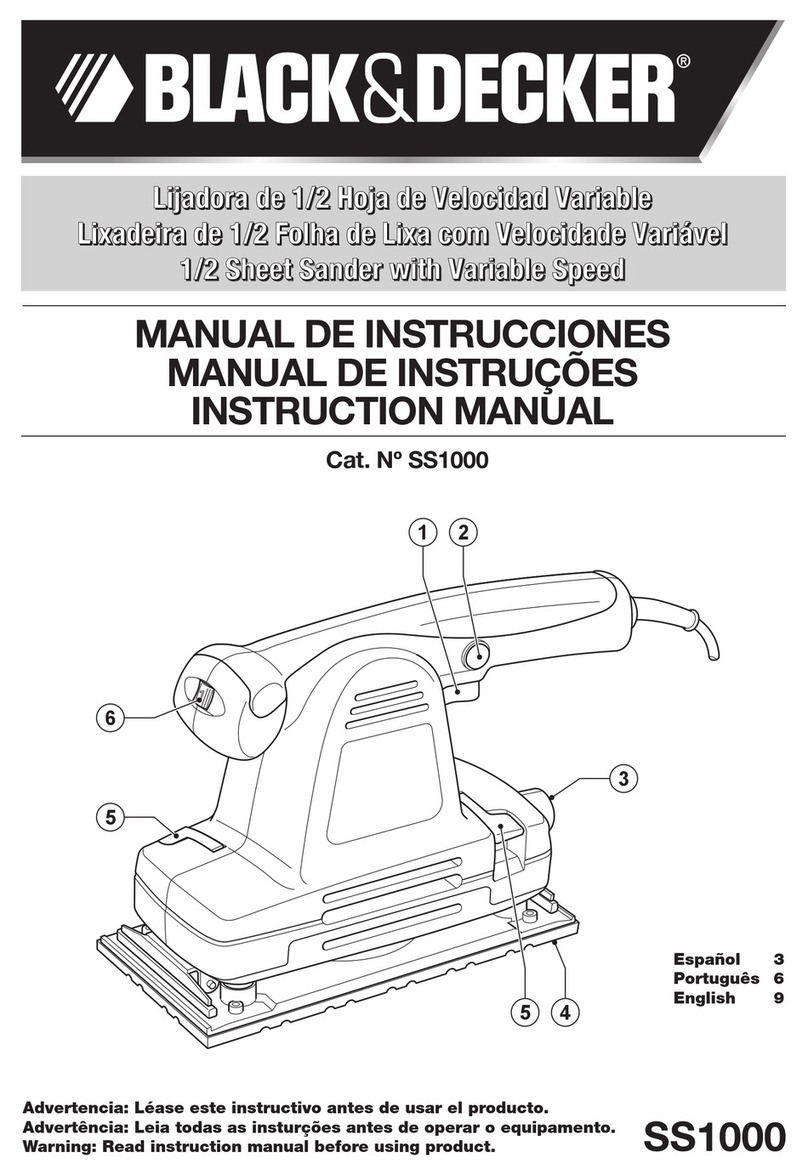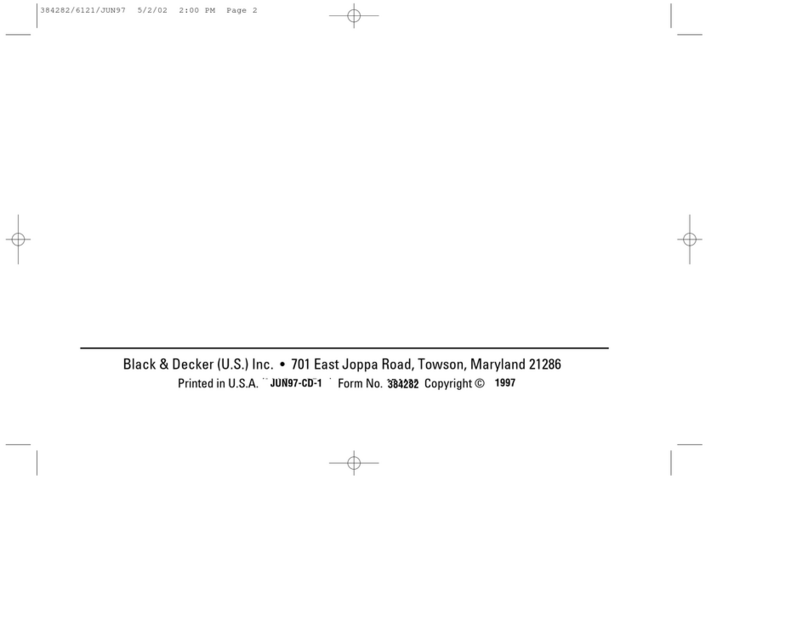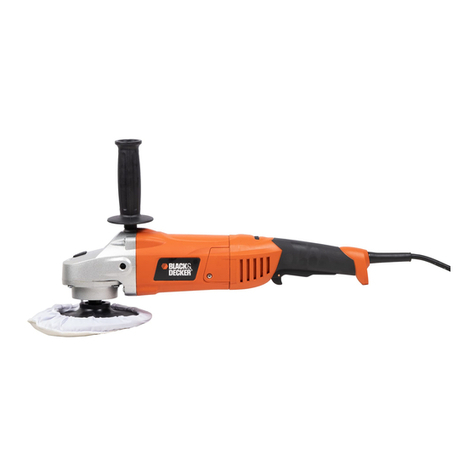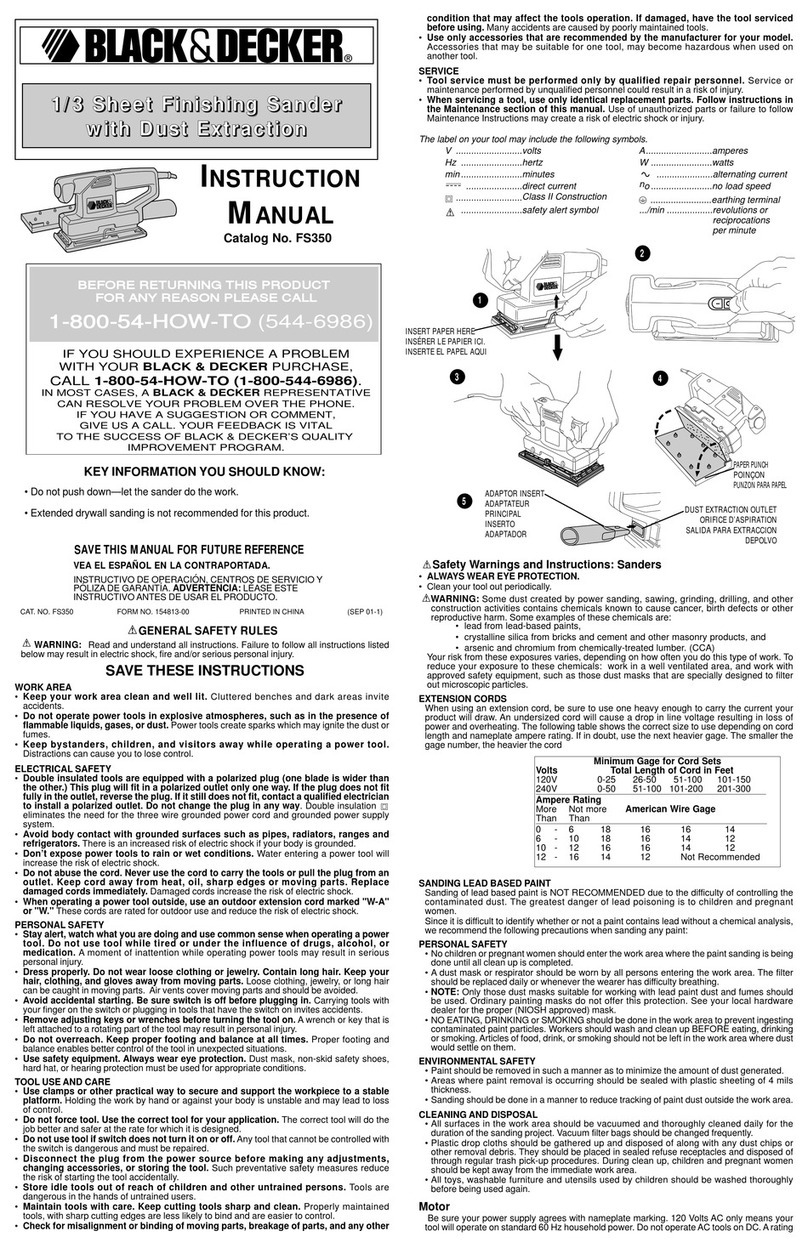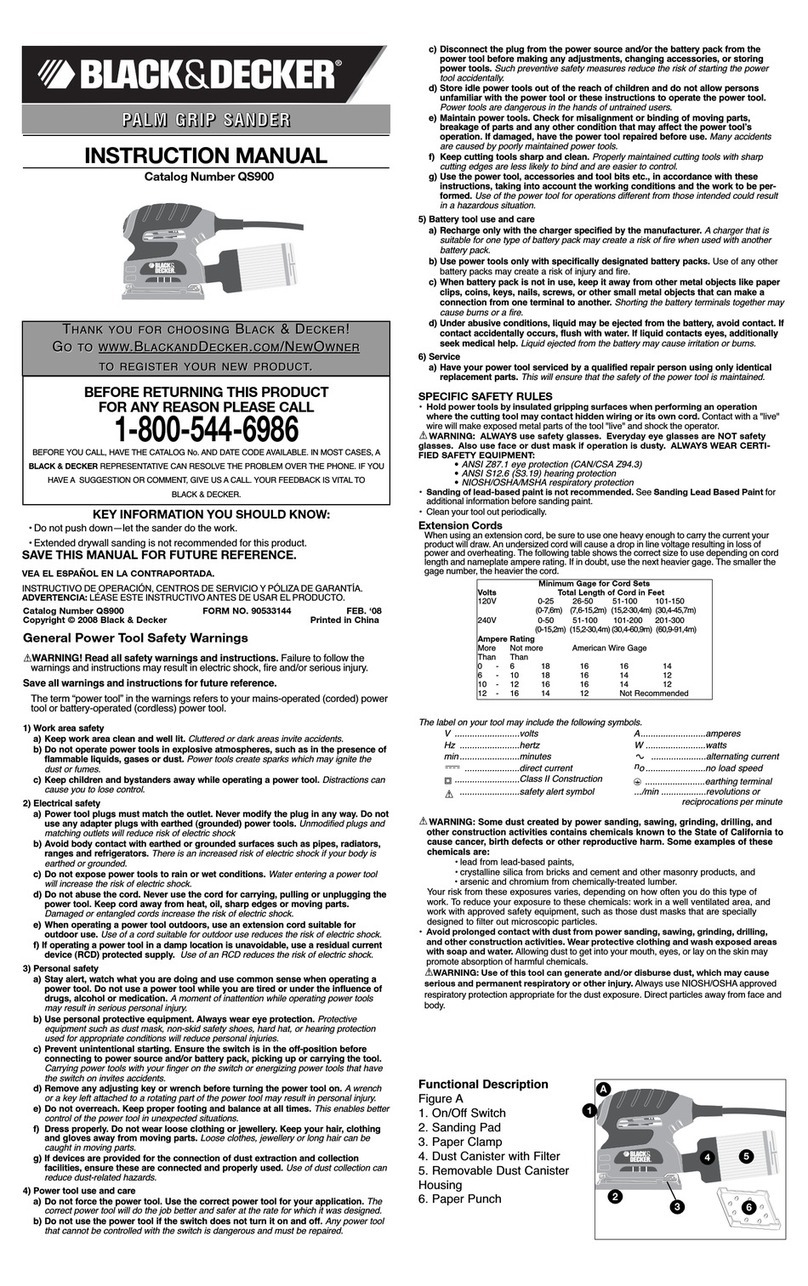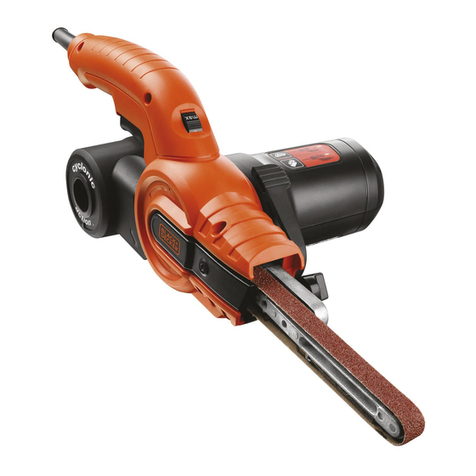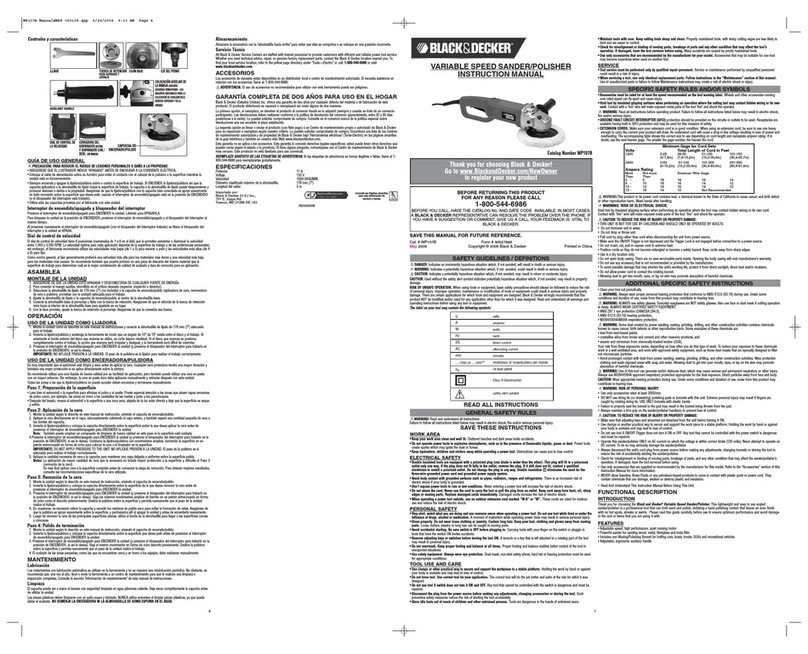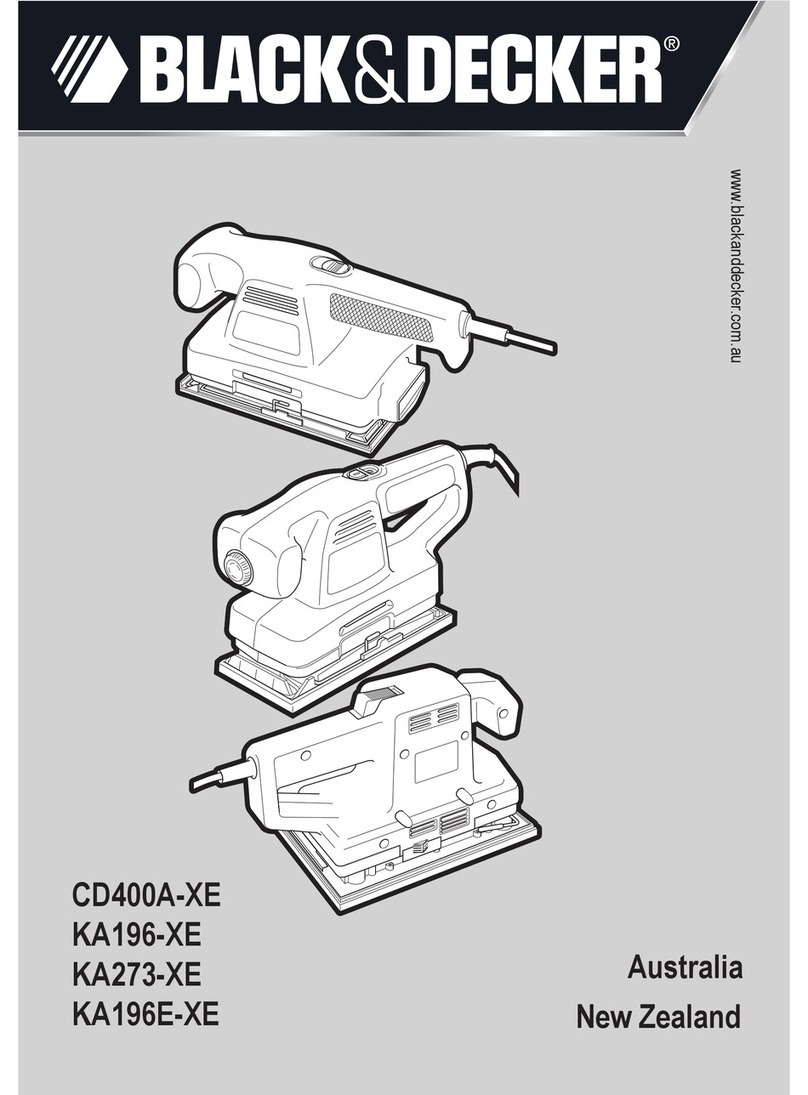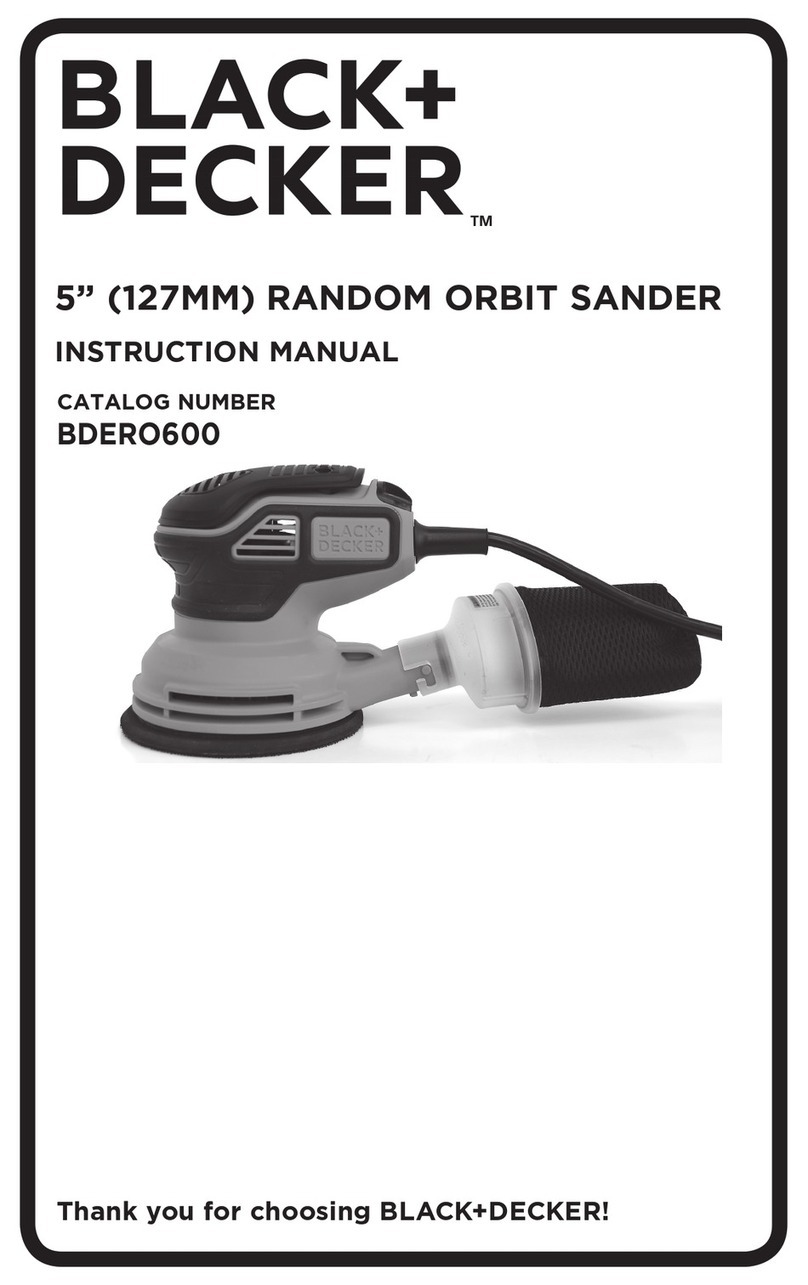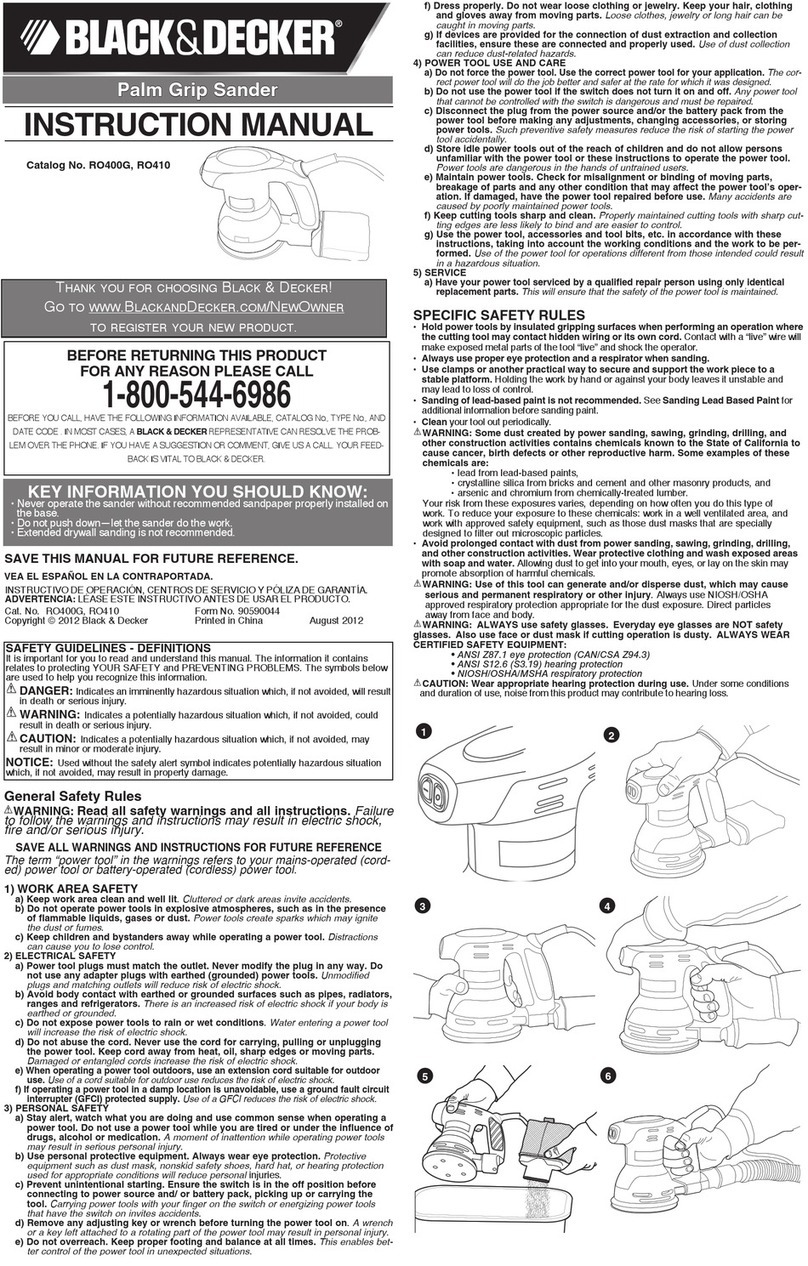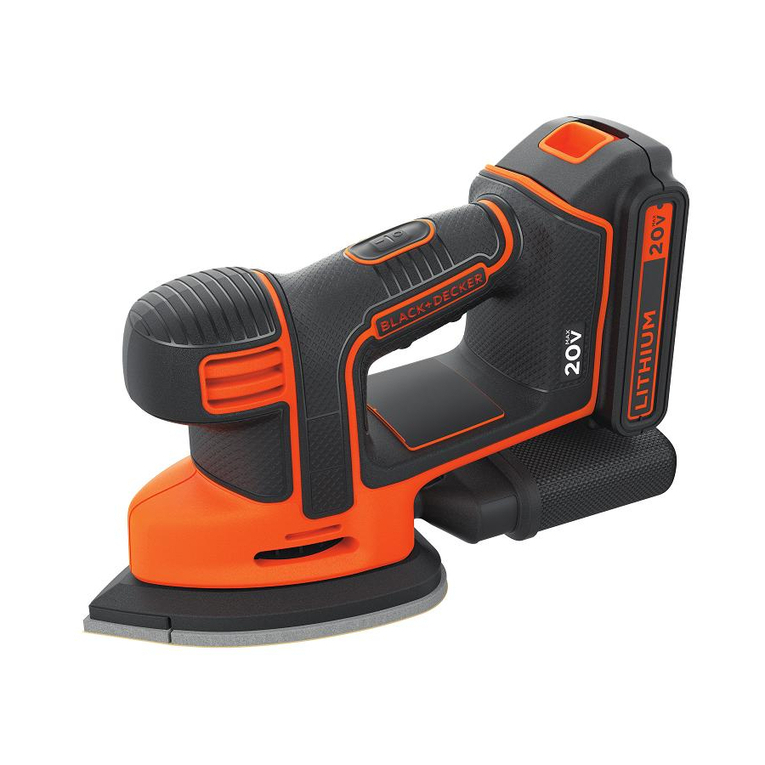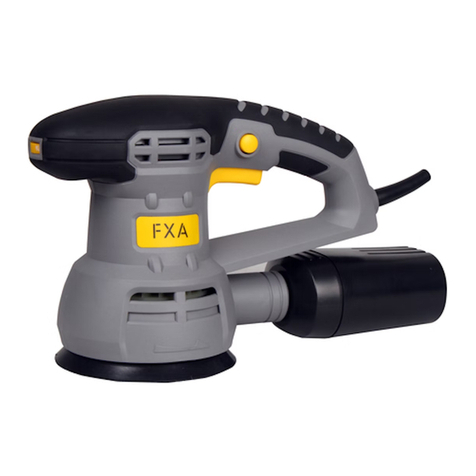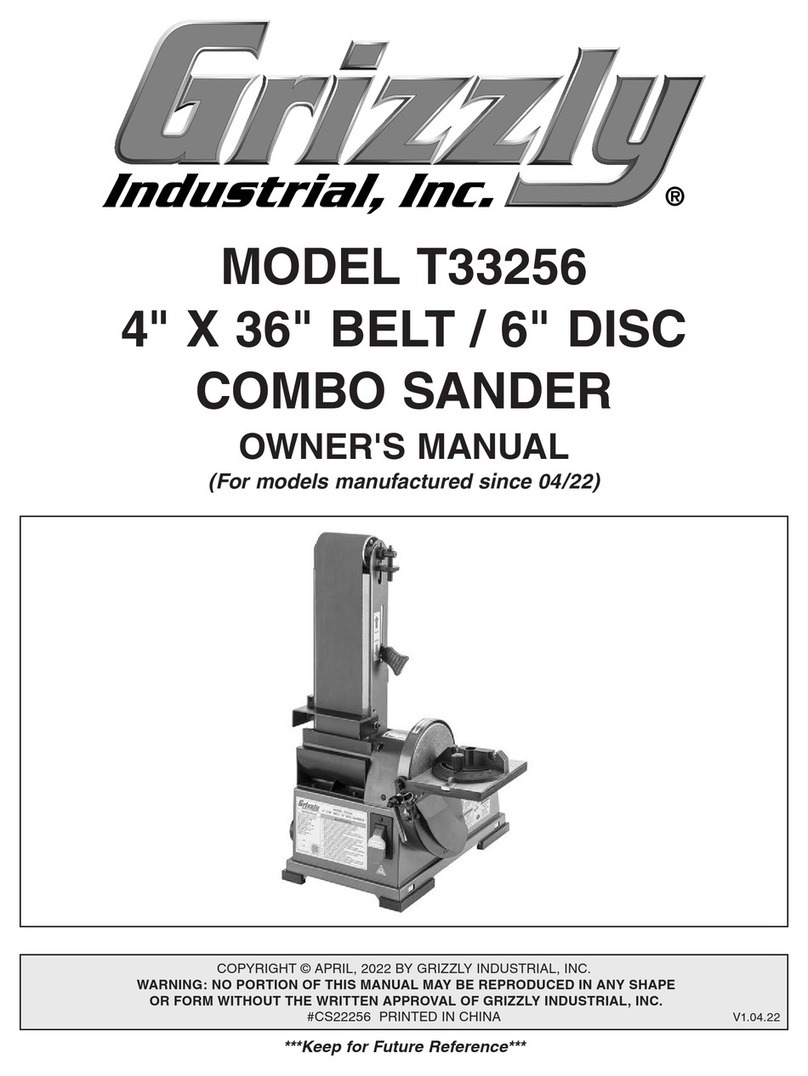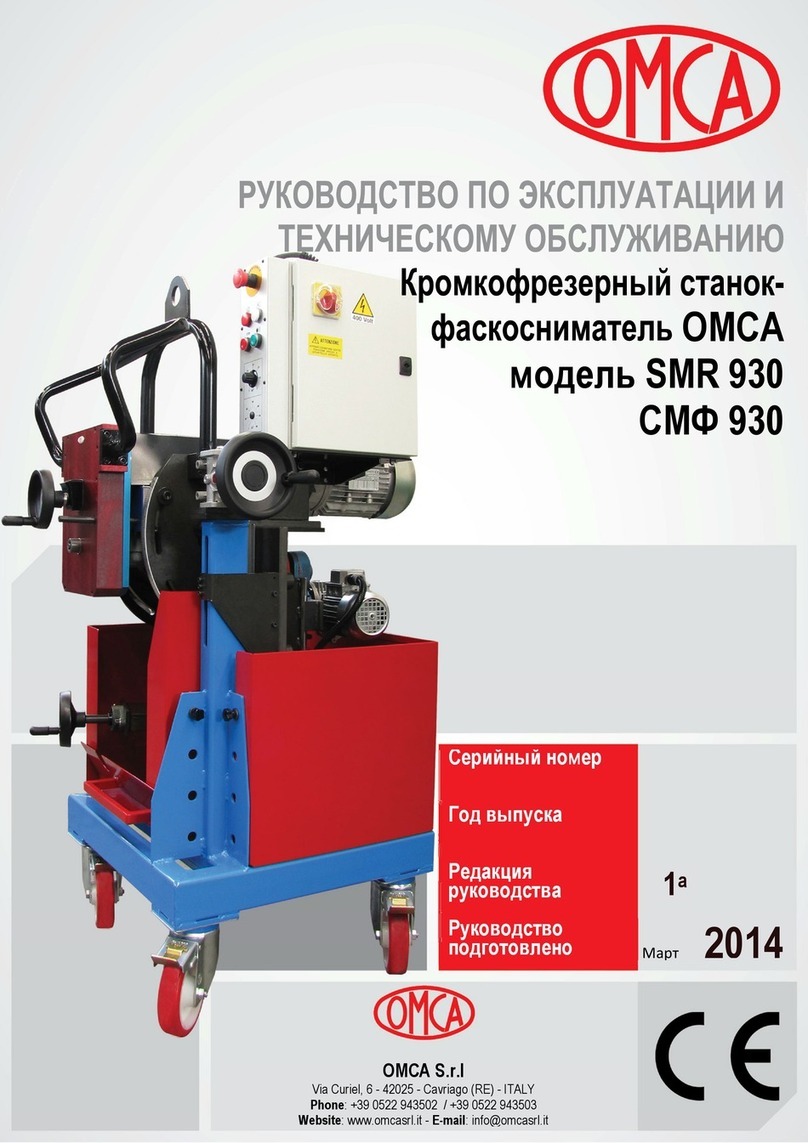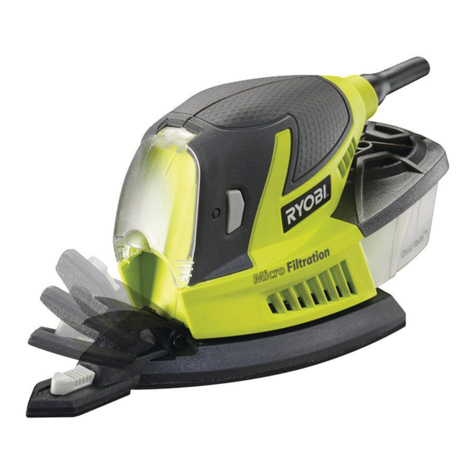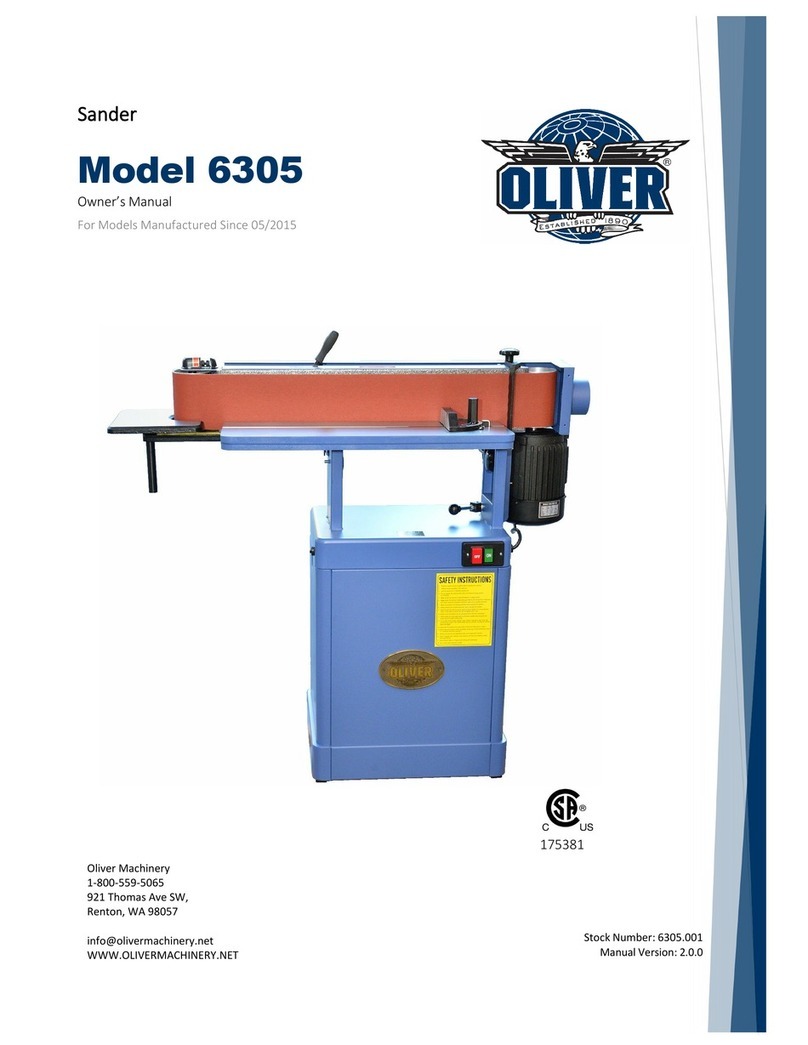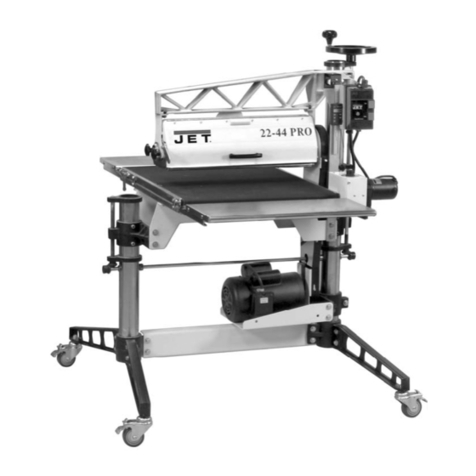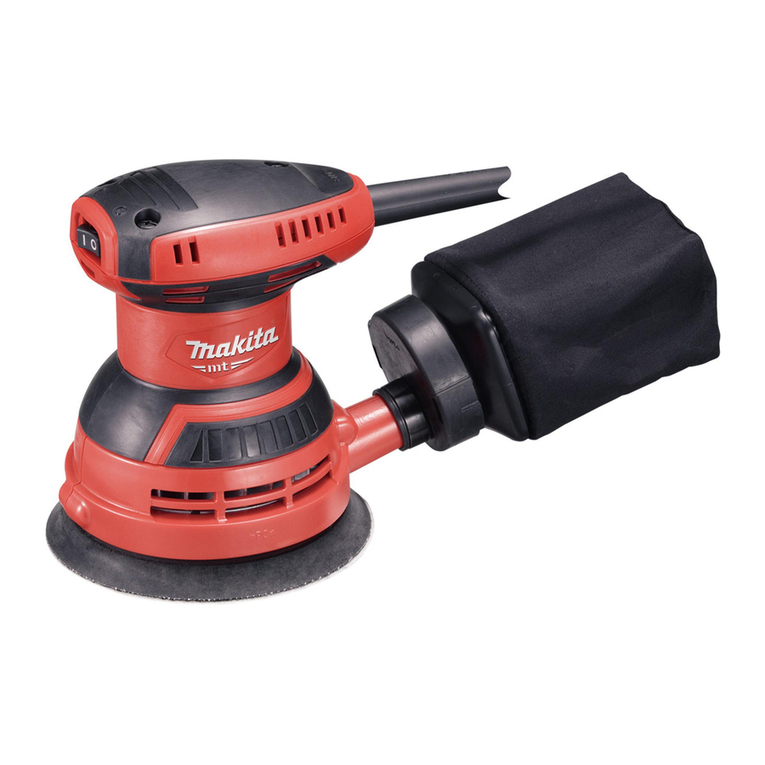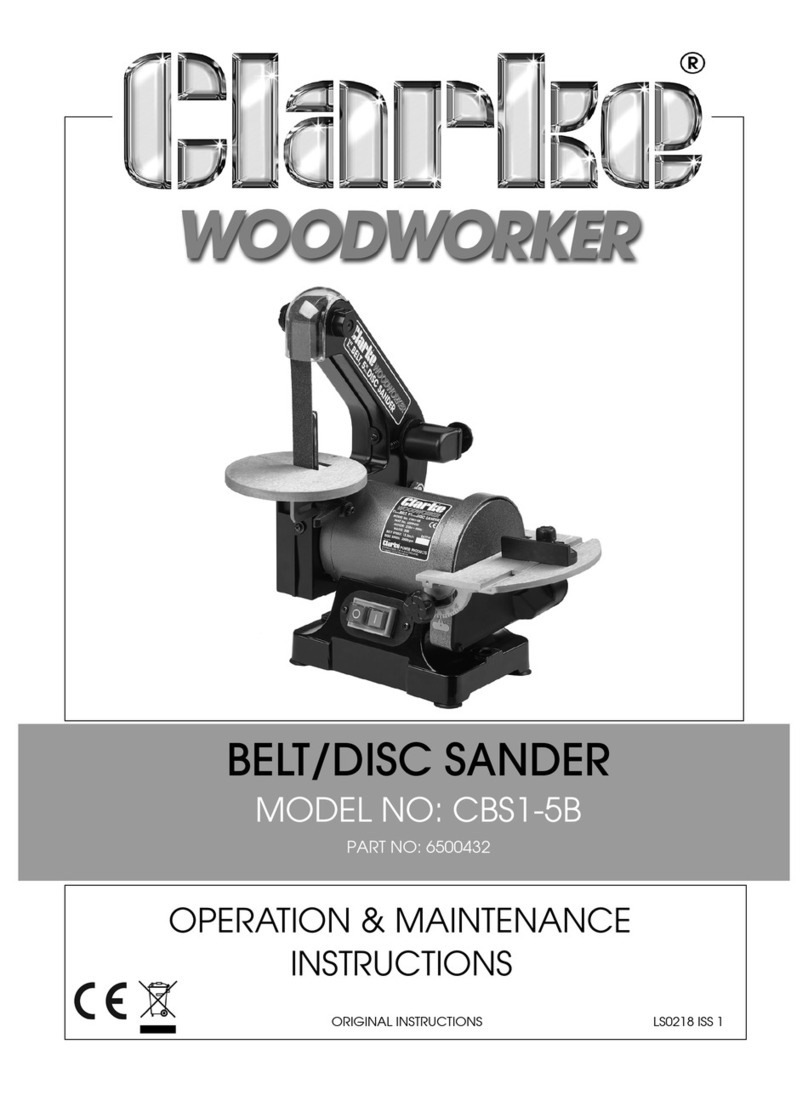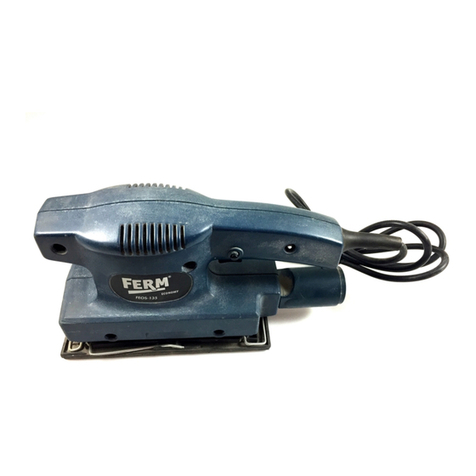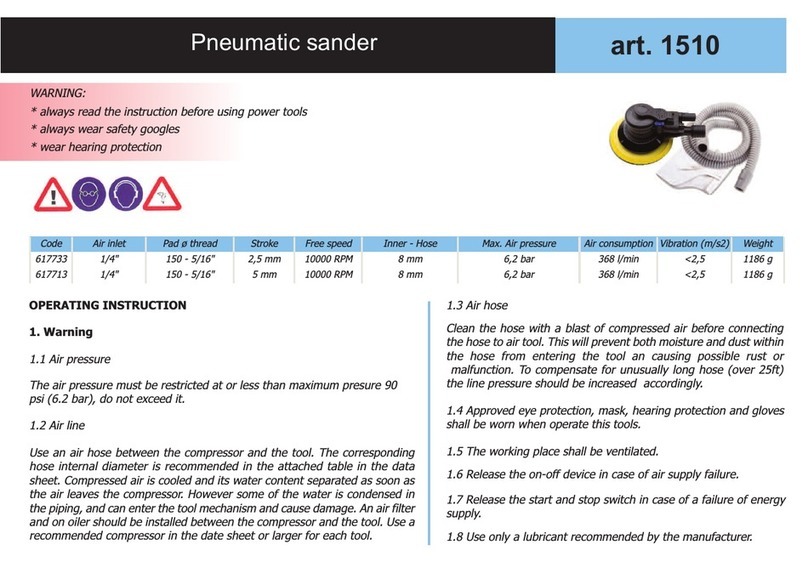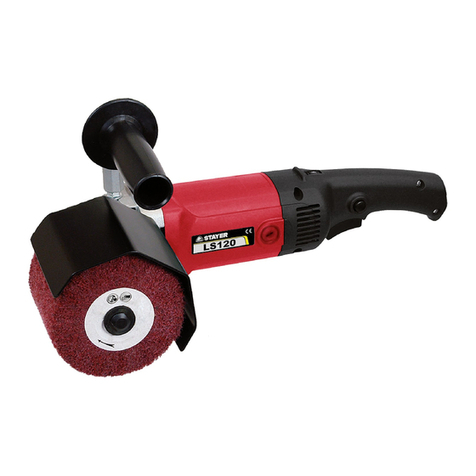
4
WARNING: Some dust created by
power sanding, sawing, grinding,
drilling, and other construction
activities contains chemicals known to
the State of California to cause cancer,
birth defects or other reproductive
harm. Some examples of these
chemicals are:
and other masonry products, and
treated lumber.
Your risk from these exposures varies,
depending on how often you do this type
of work. To reduce your exposure to these
chemicals: work in a well ventilated area,
and work with approved safety equipment,
such as those dust masks that are specially
designed to filter out microscopic particles.
Avoid prolonged contact with dust
from power sanding, sawing, grinding,
drilling, and other construction
activities. Wear protective clothing
and wash exposed areas with soap
and water. Allowing dust to get into
your mouth, eyes, or lay on the skin may
promote absorption of harmful chemicals.
WARNING: Use of this tool can
generate and/or disburse dust, which
may cause serious and permanent
respiratory or other injury. Always use
NIOSH/OSHA approved respiratory
protection appropriate for the dust exposure.
Direct particles away from face and body.
SAFETY WARNINGS AND
INSTRUCTIONS: SANDERS
ALWAYS USE PROPER EYE AND
RESPIRATORY PROTECTION.
CAUTION
:
Wear appropriate hearing
protection during use. Under some condi-
tions and duration of use, noise from this
product may contribute to hearing loss.
OTHER IMPORTANT SAFETY
WARNINGS AND INSTRUCTIONS
SANDING LEAD BASED PAINT
Sanding of lead based paint is NOT
RECOMMENDED due to the difficulty of
controlling the contaminated dust. The
greatest danger of lead poisoning is to
children and pregnant women.
Since it is difficult to identify whether or not
a paint contains lead without a chemical
analysis, we recommend the following
precautions when sanding any paint:
PERSONAL SAFETY
the work area where the paint sanding is
being done until all clean up is completed.
by all persons entering the work area. The
filter should be replaced daily or whenever
the wearer has difficulty breathing.
NOTE: Only those dust masks suitable
for working with lead paint dust and
fumes should be used. Ordinary painting
masks do not offer this protection. See
your local hardware dealer for the proper
(NIOSH approved) mask.
should be done in the work area to
prevent ingesting contaminated paint
particles. Workers should wash and clean
up BEFORE eating, drinking or smoking.
Articles of food, drink, or smoking should
not be left in the work area where dust
would settle on them.
ENVIRONMENTAL SAFETY
manner as to minimize the amount of
dust generated.
should be sealed with plastic sheeting of
4 mils thickness.
reduce tracking of paint dust outside the
work area.
CLEANING AND DISPOSAL
vacuumed and thoroughly cleaned daily for
the duration of the sanding project. Vacuum
filter bags should be changed frequently.
and disposed of along with any dust chips
or other removal debris. They should be
placed in sealed refuse receptacles and
disposed of through regular trash pick-up
procedures. During clean up, children
and pregnant women should be kept
away from the immediate work area.
used by children should be washed
thoroughly before being used again.
MOTOR
Your tool is powered by
a -built motor. Be sure
your power supply agrees with nameplate
marking. 120 Volts AC only means your tool
will operate on standard 60 Hz household
power. Do not operate AC tools on DC. A
rating of 120 volts AC/DC means that you
tool will operate on standard 60 Hz AC or
DC power. This information is printed on
the nameplate. Lower voltage will cause
loss of power and can result in over-
heating. All tools are
factory-tested; if this tool does not operate,
check the power supply.
SAVE THESE INSTRUCTIONS



